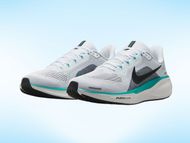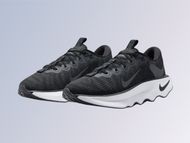When deciding between running and walking shoes, knowing the differences can avoid unease, decrease the risk of injuries, and improve user experience, whether for a casual walker or an avid runner.
This article will focus on the vital differences between running shoes and walking shoes, comprising where to find the best opportunities, current release dates, and price points to consider while buying one.

Running and walking include different movements, requiring specialized support for each
Running and walking place different demands on the feet and body, causing them to need different shoe designs. Running shoes are built to absorb the high-impact forces associated with running, as a runner’s foot constantly leaves and returns to the ground more intensely.
To handle this, they feature added cushioning, especially in the heel and midsole, to protect joints.
Walking shoes accentuate flexibility and targeted arch support, enabling a smooth, rolling foot motion. These kicks typically come with stiffer soles and less heel cushioning, tailored for gentler, continuous walking contact.
Running and walking shoe designs have evolved to meet unique user needs
The history of running and walking shoes imitates a growing demand for specialized footwear that supports different types of movement. In the 1970s, running sneakers gained traction as brands like Nike and Adidas announced state-of-the-art cushioning and arch support.
Walking shoes came later, particularly as fitness walking became popular in the 1980s and 1990s. Today, brands such as Brooks, Asics, and Skechers continue refining their designs, employing biomechanical research and testing to create shoes that suit the specific activities of their users. Each invention has molded how we think about comfort, support, and performance.

Color trends in running and walking shoes have a bit for everyone
While performance is key, style also matters, and 2024 color trends present a range of tastes. Running shoes this year attribute bold contrasts, thoughtful details, and neon accents, aimed at visibility and energy. Earthy tones and neutral shades have also appeared, attracting runners who want flexibility.
Walking shoes, often worn informally, tend to lean toward simple and earthy tones that go well with everyday clothes. Popular brands like Hoka and New Balance, now offer custom colorways, letting consumers customize their shoes to better match their style.
Here’s where to find the recent launches, price ranges, and details for 2024
As of November 2024, stores like Adidas, Nike, and Brooks are announcing new models of both running and walking kicks. Running shoes, with their progressive cushioning and support materials, typically fall between USD 100 and USD 250 for high-performance versions.
Walking shoes are often valued from USD 60 to USD 150, making them a slightly more budget-friendly choice. Many new launches are projected around the holiday season, and shoppers can find in-store fittings or discounts online.
If budget is a concern, last year’s models provide high-quality performance at a cheap cost, making them worth considering.
The choice between running and walking shoes influences comfort, support, and enjoyment. Running kicks are apt for absorbing shock and enhancing movement in high-intensity activities while walking shoes deliver targeted support for softer, low-impact journeys.
By understanding the fundamental differences, users may be well-equipped to make an informed decision and find the perfect sneaker for every step.
